Evesham Axis Asteroid FX62 Review
Evesham Axis Asteroid FX62
Straight off the mark as ever, Evesham has put together a high-end system based on socket AM2 and nForce5.
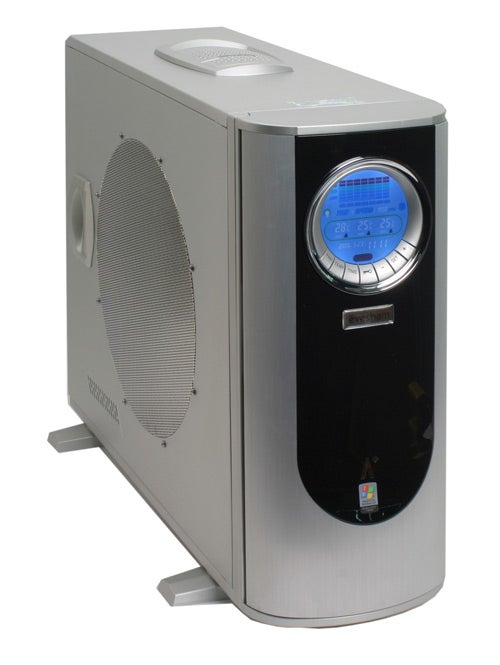
Verdict
Key Specifications
- Review Price: £2999.00
So, Evesham is at it again. No sooner is some new technology released, than we find an Evesham PC sitting on our doorstep, looking all hopeful and eager to please like a eager puppy. I guess that’s Evesham for you. It’s been at the cutting edge of technology for many years and I guess it just can’t help it. The result this time is the rather spacily named Evesham Axis Asteroid FX62, positively brimming with the latest technology. It will also cost you a wafer thin mint under £3,000, so this PC really ought to be quite special.
So what technological marvels does this PC contain? To get straight to the heart of it the new items are AMD’s new flagship processor – an Athlon FX-62 and some DDR2 memory to power it. This processor is based on a new socket called AM2, which is showcased by nVidia’s brand spanking new chipset, nForce5, which Spode covered here. 
But before we go into those the first thing we should talk about is the system case, which was the subject of some discussion in the office. It’s clearly an off-the-shelf case that’s been customised by Evesham. The black on silver front is quite smart and is dominated by a large blue LCD display that’s set into the door. This contains readouts for fan speed and CPU, hard disk and system temperature as well as the date and time. If one of the system fans stop spinning it will even start beeping at you.
However, it’s actually very hard to make out anything on the display and when viewing it directly from the front it’s virtually impossible – you have to look at it at an angle.
Even so, its undeniably useful. However, useful is not the same as attractive. It’s clear that Evesham is trying hard to make an impression with this machine but my feeling, and one shared by the others in the office, is that it looks and feels cheap. And that isn’t really what you want from a £3,000 PC. Alienware PCs are also expensive, but at least they look it.
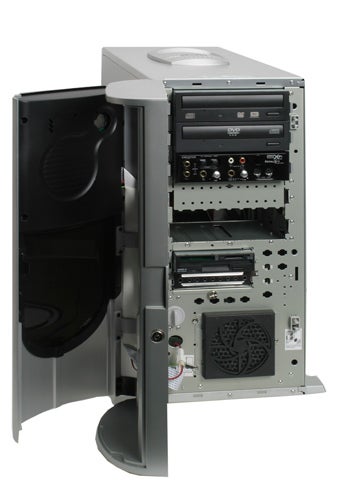
The front fascia sits in front of a cover for a second door, which has a more conventional and rather plastic case front.
Behind this you’ll find two optical drives in the two external 5.25in drive bays. One is a 16-speed Sony DVD-ROM drive (DDU1615) and the other a dual-layer DVD-burner, a Sony DW-G10A, that will even read and write to uncaddied DVD-RAM discs.
Underneath these, another 5.25in bay contains a break-out box for the Fatal1ty edition of the Creative X-Fi sound card. The box provides, a whole host of connections, such as optical and S/PDIF in and out, phono outputs, and midi in and out. Unless you’re into music production on some level, it’s debatable if you’ll need any of this. However, the Extreme Music version that doesn’t have the break out box also doesn’t have X-RAM, so if you feel want a fully specced X-Fi card you have to have one with a break out box. You could of course, just not install the break-out box.
Beneath this is a floppy disc drive that also contains multiple card readers, which is a great inclusion as it means you don’t have to choose between old, but sometimes still necessary, and new technology. 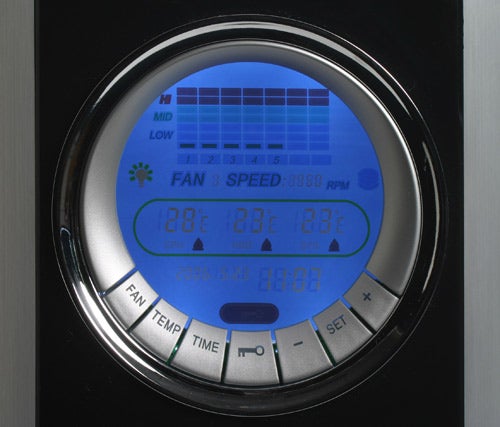
Beneath this you’ll find a fan-guard, covering an 80mm fan that draws air into the PC. This air comes in underneath the single hard disk. If a single disc seems lean for such an expensive PC, it is at least a very large capacity drive – a 500GB Western Digital, with 16MB of cache. The only disappointment is that Evesham has not partitioned this into C and D drives, which I always feel is a good idea – if only because it enables you to recover or reinstall Windows without having to worry about data on the D partition.
As mentioned at the top of the review, the processor is an AMD Athlon FX-62, no less than the very top of the pile for performance from AMD. It’s a dual-core processor and runs at 2.8GHz, with 1MB of Level cache for each core. It’s a powerhouse and as you can see from the scores it helps make this the fastest machine we’ve ever tested – though that’s a claim we seem to make every couple of months or so as newer machines come in. 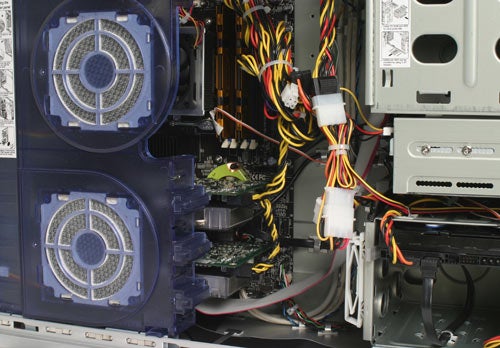
The motherboard Evesham has used is a Foxconn C51XEM2AA, board based on the nForce 590 SLI chipset. There are two x16 speed PCI Express slots filled with nVidia GeForce 7900 GTX graphics cards. There are x4 and x1 PCI Express card slots, both unoccupied. However, the dual-slot GeForce 7900 GTX cards means that the x1 slot is obscured and can’t be used. You might be able to get a card in between to fill the x4 slot but it would have to fit underneath the SLI bridge adaptor and might overly restrict the air flow.
There are two PCI slots but the dual slot card means that again, only one can be used. As mentioned earlier, Evesham has gone with a Creative Fatal1ty X-Fi card, even though there is on board 7.1 channel sound using a Realtek codec. It would have been good if Evesham had blocked these ports off as I initially plugged the speakers into these ports rather than the sound card and wondered why I wasn’t getting any sound, a mistake I’m sure a lot of buyers might also make when setting up. 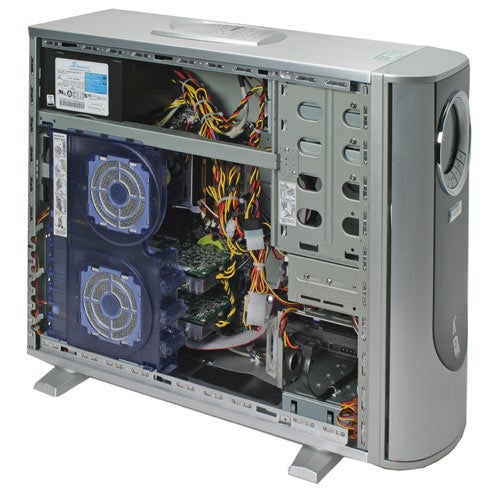
The X-Fi card means that there’s no more room for further PCI upgrades. An alternative would have been going for an Aegia Physx card and using the on board sound but as our sister title Bit-Tech has proved here it’s still early days for Physx, so you will get a better gaming experience from the system as supplied.
The memory used is Crucial Ballistix DDR2, running at 400MHz. 2GB is installed, with 1GB per DIMM, for dual-channel operation. Two DIMM slots are free. As explained by Spode in our nForce5 first look, nForce5 motherboards sport BIOSs that support EPP memory, a feature that when enabled ensures that memory runs at its tightest timings and automatically optimises the CPU frequency and memory speeds. However this currently is only supported by Corsair RAM, which Evesham hasn’t used. Obviously, as the fastest machine we’ve ever tested it hasn’t held the system back too much, but it would have been interesting to have seen what it could do with those optimisations.
In addition the GPU Ex option was not enabled in the BIOS. According to Spode’s testing this is an optimisation for SLI that provides a very minor increase in performance. It’s not the end of the world that it was off, but it indicates a minor lack of attention to detail.
To power all of these Evesham has sensibly supplied a decent 600W Seasonic that is rated to supply 18A on each rail concurrently, which is important for powerful dual graphics card systems. 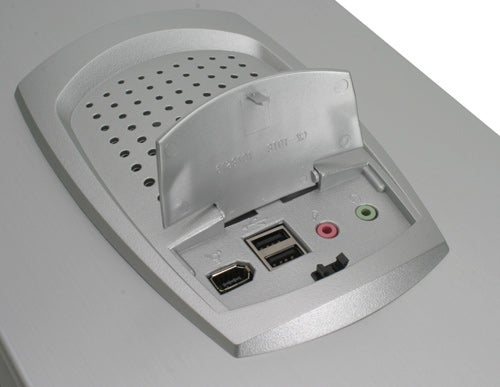
Round the back of the system you’ll find four USB ports, two Gigabit Ethernet ports and both 400Mb/s FireWire a and 800MB/s FireWire b, used on devices such as this external Maxtor drive. At the top of the machine is a plastic protrusion, which contains an 80mm case fan and a hatch, which when clicked pops up to reveal a two USB ports, a FireWire port and a headphone and microphone port.
The interior of the system is generally well organised. It not exhaustively finished like an Alienware, but all the cables are run efficiently and tied back wherever possible. There’s certainly no shortage of fans to cool the interior. As well as the one on the front and at the top, there’s an 80mm fan at the rear, and two built into a clip on at the side, which probably aren’t necessary. In fact, there are a total of ten fans cooling this system, if you include the ones on the graphics cards the one of the motherboard Northbridge chip and the one in the PSU. With that in mind, it’s impressive that the system isn’t irritatingly loud, mainly thanks to Evesham’s choice of low noise fans. 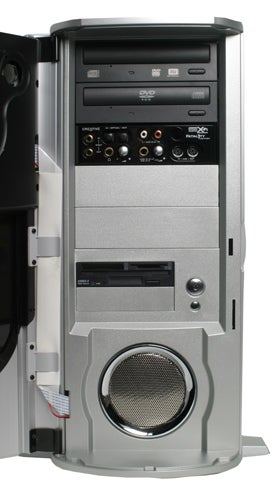
The PC was sent to us as a complete system, including a monitor. The display supplied was a Viewsonic VX20205wm, which we reviewed here. The display is smart, with a decent stand and it tilts forward and back. There’s also a neat cable management system at the back. It can accept DVI and VGA signals and has an input for the built in speakers. The image quality was impressive, with bright and sharp text. It decent for games with a 16ms response time (white to white). The widescreen 1,680 x 1,024 resolution is pleasant to work with and the physical size of the monitor means it won’t take up too much space on your desk.
The speakers supplied are a set of Creative Inspire T7900s. This is a 7.1 set that looks good in the black. 7.1 is really overkill for all but the largest rooms, and for these the Creative’s won’t really cut it. However, for general gaming and movie watching these will still serve.
Finally, the Cordless Microsoft keyboard and mouse combination are solid, sturdy and well built, though gamers might prefer to go for a wired solution. 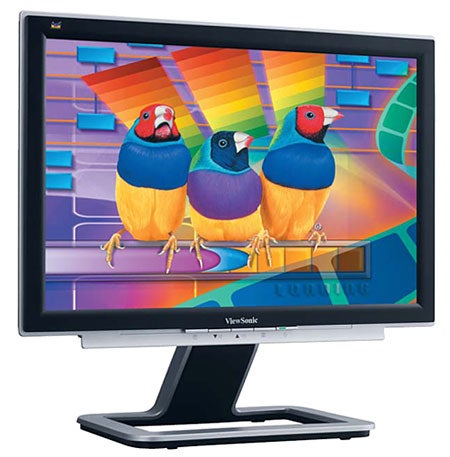
In terms of software Evesham now supplies the Windows Media Center Edition version of Windows XP as standard, which is no bad thing. However, if you do want to use it from the sofa you’ll need to get hold of a remote dongle and remote separately.
Performance on this machine was nothing less than fantastic and the new chip and memory seems to have made a tangible benefit. For comparison we used the numbers we got from the Alienware Aurora 7500, which featured an FX-60 and a pair of 7900 GTXs.
This was most clearly indicated by Battlefield 2 and Counter-Strike: Source, which when run on a system with high-end dual graphics card are patently CPU locked. The new combination of faster CPU and DDR2 memory increases performance across all tested resolutions in these titles. Battlefield 2 now leaps from just over 100fps to just over 131fps, while Counter-Strike goes from 72fps to round 83fps.
In Call of Duty, the lead isn’t quite as commanding because the graphics cards in the Alienware were clocked higher. Call of Duty is far more demanding on the graphics cards so at the top end – 2,048 x 1,536, the Evesham it’s actually slower. Of course, you can try and overclock the cards in the Evesham. 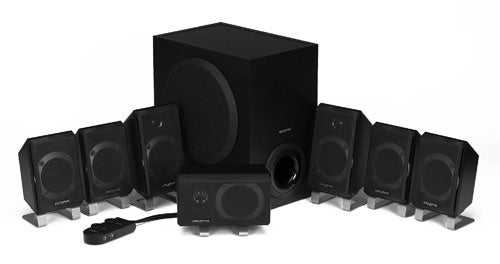
As a system though, the scores demonstrate that with the supplied monitor you can play any game that’s out right now, and probably for some time to come, at maximum detail.
The Axis Asteroid is another fine machine from Evesham. It’s stocked with the best components, and it delivers in the performance stakes and the monitor is a good choice too. As a bonus, Evesham also offer three years on-site warranty.
The only downsides are that the case isn’t really special enough and that it’s quite expensive, though for what you’re getting it’s not bad value. The problem is that most of the cash is going on the absolute high-end FX-62, which is at retail a £750 CPU – probably overkill for most people. Drop down a couple of notches and this would offer even better value – though it would no longer offer reference level performance. 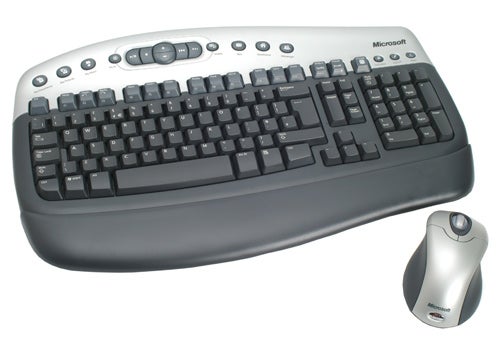
However, if you’re looking a one-stop-shop system that’s the fastest thing around right now, but don’t want to pay through the nose for Alienware prices, this Evesham will certainly do the trick. Just stick it under the table rather than on the desk.
”’Verdict”’
Fast and furious, this Evesham is the speediest machine we’ve ever tested. However, the case really doesn’t really do its contents justice – it just looks too cheap. Case aside though, this system ticks every box for performance, value, build quality, and support. For out and out speed it can’t be beaten and as such this system comes recommended.
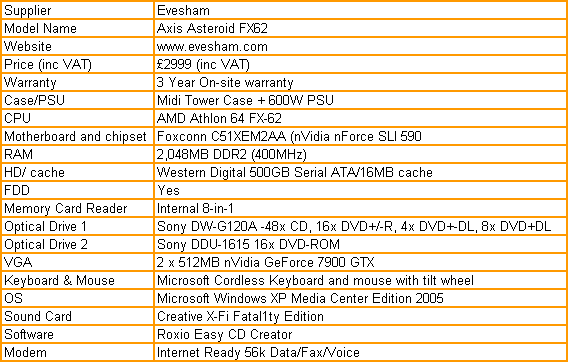
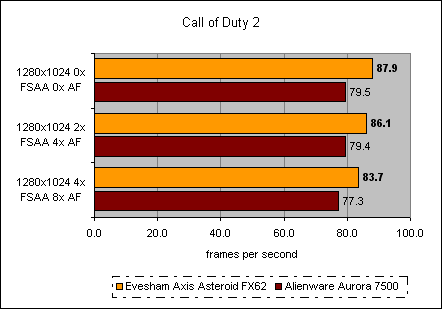
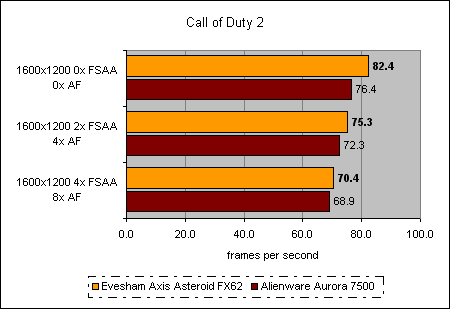
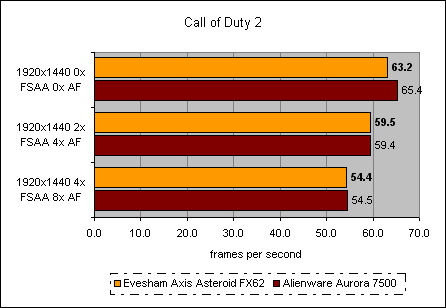
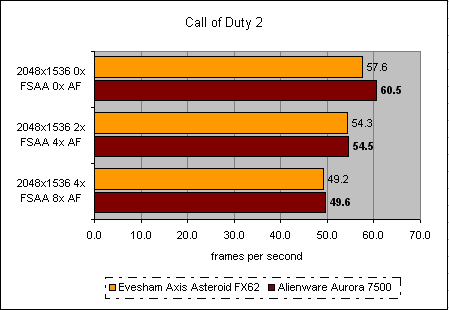
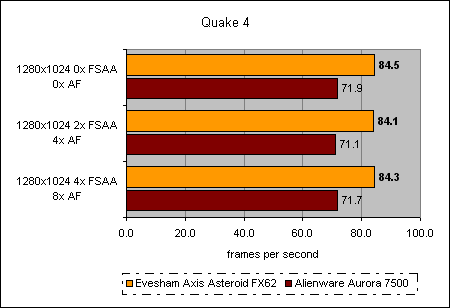
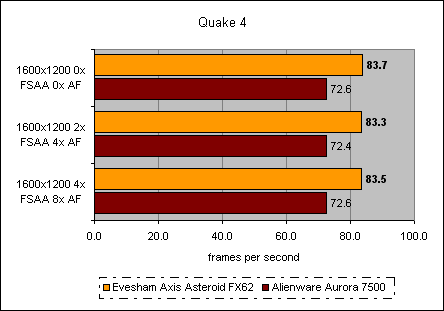
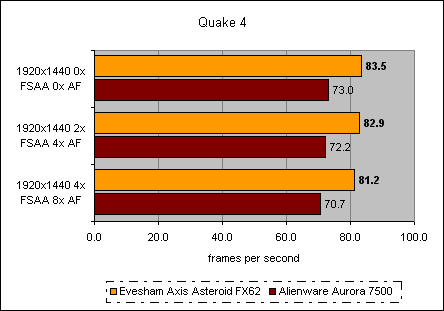
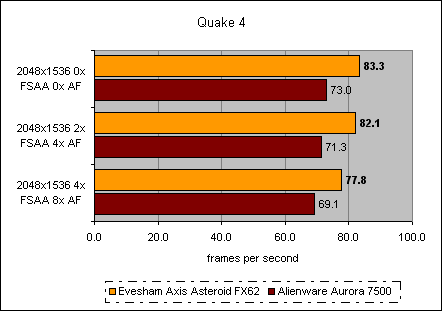
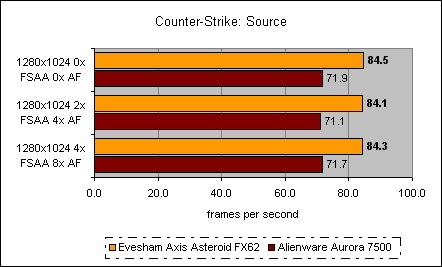
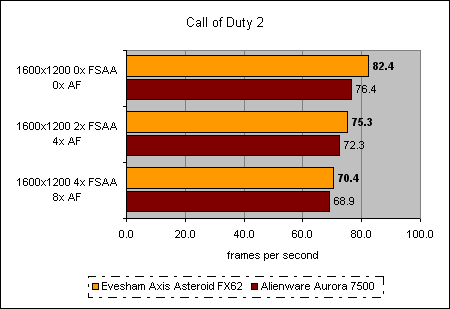
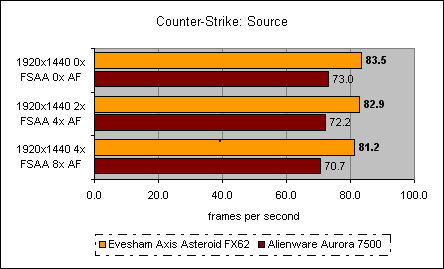
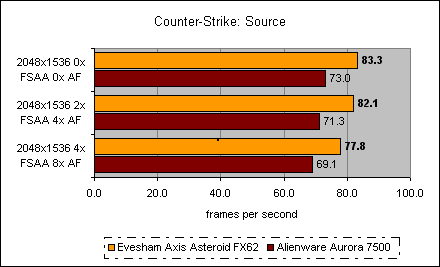
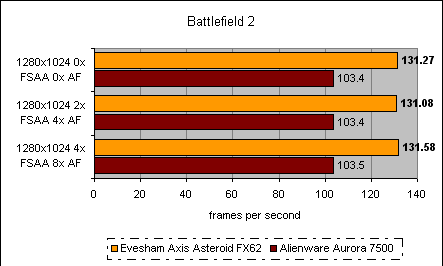
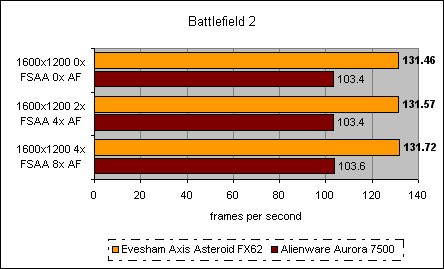
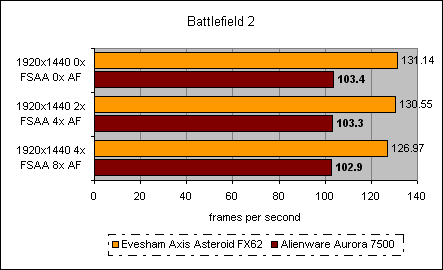
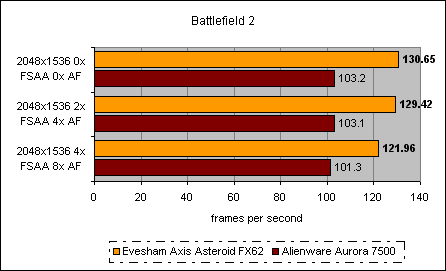
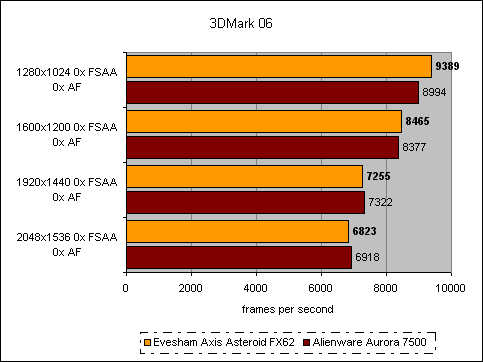
Trusted Score
Score in detail
-
Value 8
-
Features 9
-
Performance 10

